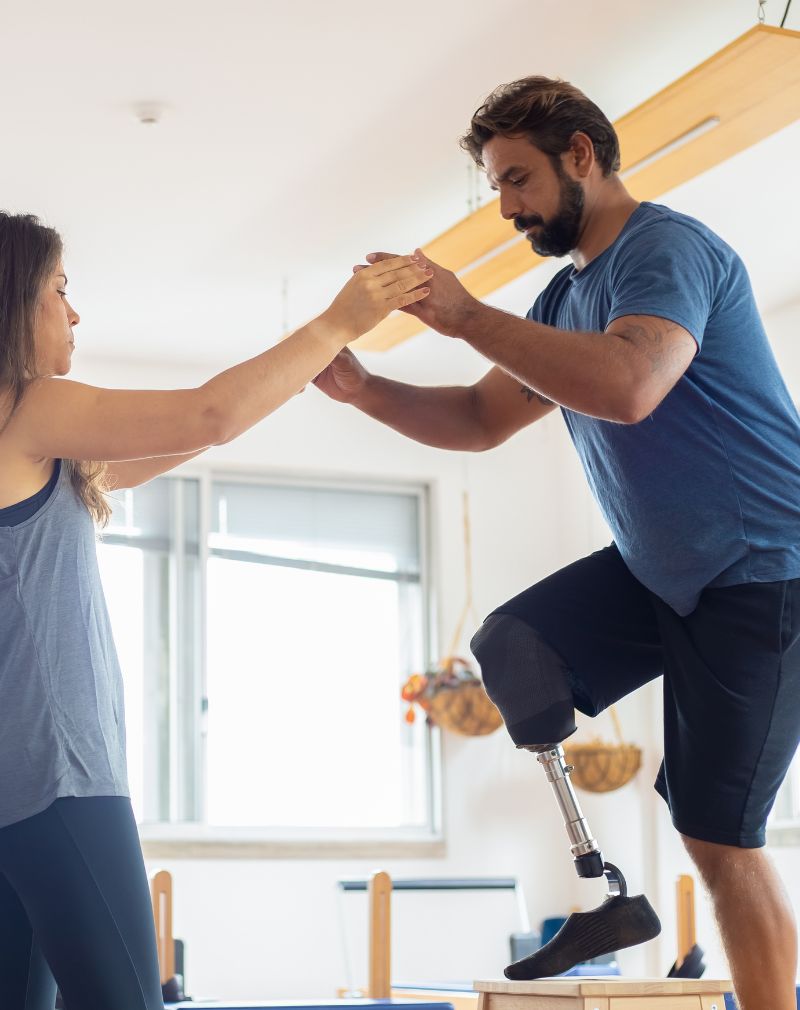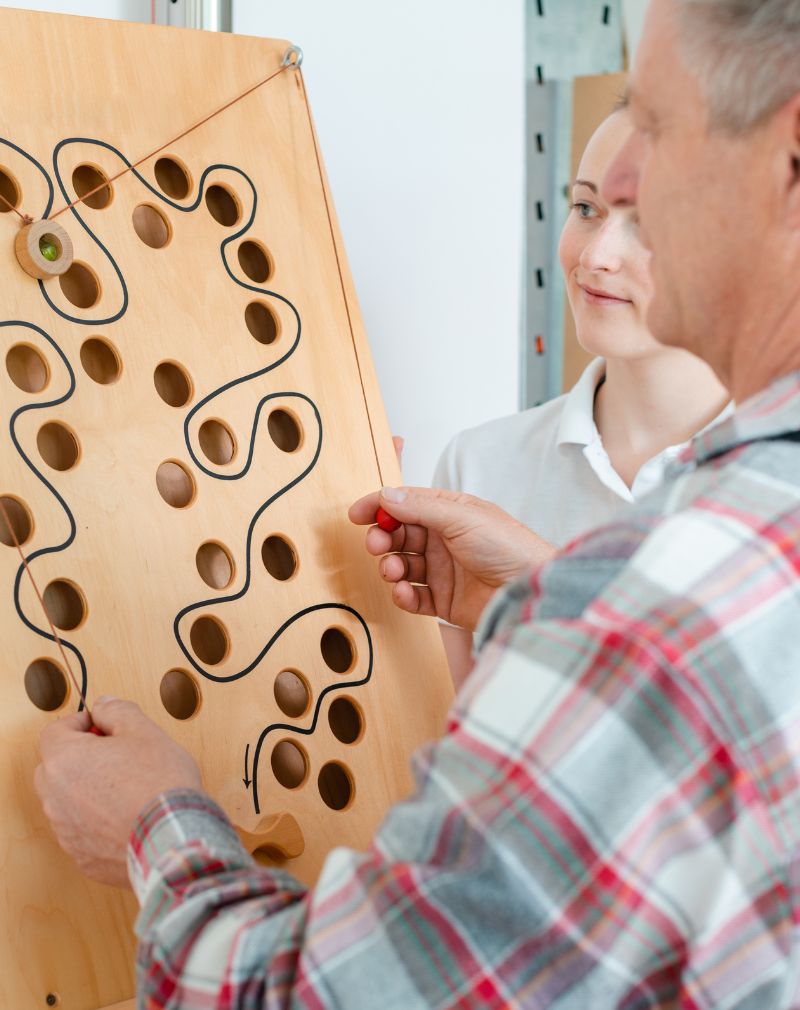You sit for hours. At your desk. In your car. On the couch after work.
And slowly, without warning, your body begins to revolt.
The stiff neck you ignore becomes a migraine that ruins your weekend. The lower back pain shows up each morning before your feet hit the floor. Your wrists tingle. Your shoulders burn. You blame age, stress, maybe a bad mattress.
But the truth is harder: your setup is breaking you down.
In 2025, workplace-related musculoskeletal disorders are among the top causes of long-term disability worldwide. Not accidents. Not disease. Just poor posture and badly designed workspaces. And most people don’t realize it until the pain becomes permanent.
This isn’t just about being uncomfortable. This is about your quality of life falling apart one workstation at a time.
At The American Wellness Center in Dubai Healthcare City, our Occupational Therapy team sees it every day. The professionals. The parents. The students. All living with pain they didn’t see coming.
Ergonomic evaluations aren’t a luxury. They’re a line of defense. They stop the damage before it settles in for good.
Why Ergonomic Evaluations Matter in OT Practice
Chronic pain doesn’t announce itself with a bang. It builds slowly. A crooked chair. A screen just a little too high. A workstation designed for someone who isn’t you.
And suddenly, showing up to work means showing up to suffer.
In 2025, musculoskeletal disorders are costing companies more than money. They’re costing clarity. Energy. Sleep. Relationships. This is what poor ergonomics does. It doesn’t just affect how you work. It changes how you live.
At The American Wellness Center in Dubai Healthcare City, we hear the same story from different mouths:
- “I can’t sit through meetings without my back locking up.”
- “My hands go numb when I type too long.”
- “I’ve been taking painkillers just to get through the day.”
This isn’t about bad posture. It’s about untreated dysfunction becoming your new normal. That’s where occupational therapy steps in. Not to give you a better chair — but to give you your body back.
An ergonomic evaluation is not a checklist. It’s a rescue plan.
Core Components of an Ergonomic Evaluation
Forget the word “assessment.” This isn’t about ticking boxes.
This is how we figure out what’s quietly wrecking your body:
We watch you work.
Not just posture. Movement. Habits. The way you lean, reach, stretch without thinking. Your pain isn’t random — it’s patterned. We find the pattern.
We read your space like a crime scene.
Monitor too high? Chair too stiff? Keyboard pulling your shoulders forward? It all adds up.
We ask real questions.
What hurts? When does it start? What makes it worse? This is where the clues live.
We fix what’s fixable today.
That might mean moving your screen. Changing your seat. Teaching your body to sit, stand, breathe better.
What you get isn’t advice. It’s a plan designed by someone trained to notice what others miss.
Evidence of Effectiveness
You know what people say after an ergonomic evaluation?
Not “That was helpful.”
They say, “Why didn’t I do this earlier?”
The science backs it. Reduced pain. Fewer sick days. More energy. Better focus. When your body stops screaming, your brain can finally work.
We’ve seen it across all types of jobs:
- Desk-bound execs reclaim their neck and shoulders.
- Warehouse workers stop ending their shifts with ice packs.
- Teachers and healthcare staff stop dragging their feet home in pain.
The shift isn’t just physical. It’s mental. Pain fogs everything. Take it away, and people come back to life.
Dubai Context: Local Touchpoint
Dubai doesn’t slow down.
It’s fast. Demanding. Competitive. Offices run on tight deadlines and tight shoulders. Long hours at a desk. Meetings stacked back to back. A lifestyle that rewards output, not posture.
And it’s not just locals feeling the weight.
Expat professionals, especially those new to the city, are working harder to prove themselves. They stretch longer days over two time zones. They skip breaks. They chase productivity at the cost of their spine.
The result? Pain that doesn’t care about your LinkedIn profile.
At The American Wellness Center in Dubai Healthcare City, our occupational therapists understand this rhythm. They don’t just treat pain — they treat the work culture that caused it. Whether you’re leading a team downtown or teaching in Jumeirah, we tailor ergonomic care to your reality.
No textbook setups. No generic fixes. Just what works, here, for you.
Integrating Technology & OT Expertise
Technology isn’t the answer. It’s the tool.
What matters is who’s holding it.
At AWC, we use precision tools to get honest answers: pressure-mapping sensors, real-time posture tracking, digital ergonomics platforms that catch what the eye misses. But the magic isn’t in the machines. It’s in the hands of the occupational therapists interpreting what they see.
Here’s how it works:
- Sensors show where your chair supports you — and where it doesn’t.
- Software tracks how long you slouch before pain sets in.
- AI platforms flag movement patterns that lead to injury.
But none of that matters unless someone can translate it into change. That’s where OT comes in. We don’t just collect data. We make it mean something. Then we act on it.
Every solution we offer is grounded in your habits, your job, your body. That’s not a trend. That’s expertise.
How AWC Delivers Ergonomic Evaluations
Most people come to us when they’re already hurting.
But here’s what happens next:
- We listen.
You tell us what’s wrong, and when it started. You show us your pain. - We assess.
Our occupational therapists study how you move, how you sit, how your space is shaping your body. - We act.
You leave with adjustments you can make today. And a longer plan that grows with you. - We follow up.
We check in. We tweak. We make sure the pain doesn’t creep back when life gets busy again.
Some people see us in the clinic. Others invite us to their office or home. We work with your schedule, not against it. And when needed, our OT team collaborates with physiotherapists, wellness coaches, and internal medicine doctors under one roof.
Because the goal isn’t just short-term relief. It’s long-term function. Comfort that lasts.
When Comfort Becomes a Fight, It’s Time to Listen
You weren’t meant to live with pain.
Not the kind that creeps in after every meeting. Not the kind that makes your shoulders feel like concrete or turns typing into torture. If your workspace is stealing your comfort, it’s time to take it back.
Start small:
- Adjust your chair so your feet touch the ground.
- Raise your screen to eye level. No tilting. No slouching.
- Set a timer. Every 45 minutes, stand. Breathe. Move.
And if you’re an employer, understand this:
Pain is expensive. It drains productivity. It drives burnout. It leads to sick days and resignation letters. But it doesn’t have to.
You can change this:
- Offer ergonomic training sessions that actually stick.
- Invest in the right furniture, not the flashiest one.
- Bring in professionals to assess what your staff isn’t saying out loud.
Pain doesn’t go away on its own. It settles in.
But so does healing — when you get the right help.
At The American Wellness Center in Dubai Healthcare City, our Occupational Therapy team doesn’t just treat discomfort. We prevent it. We rewire workspaces and retrain bodies so people can live without wincing through the day.
If you’ve been powering through the pain, maybe it’s time to stop.
Book your ergonomic evaluation today. Let’s stop the damage before it becomes permanent. Let’s get you back to living, not just enduring.



